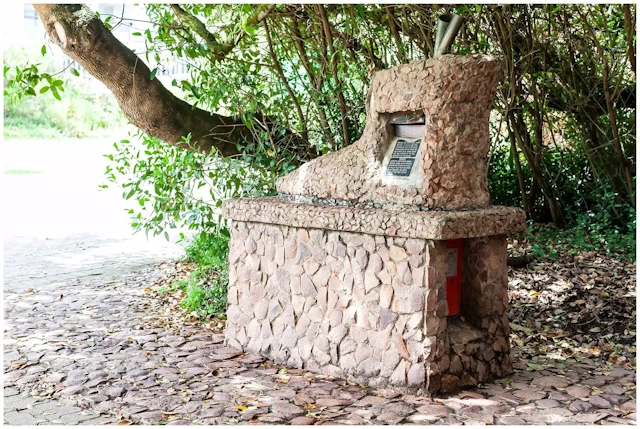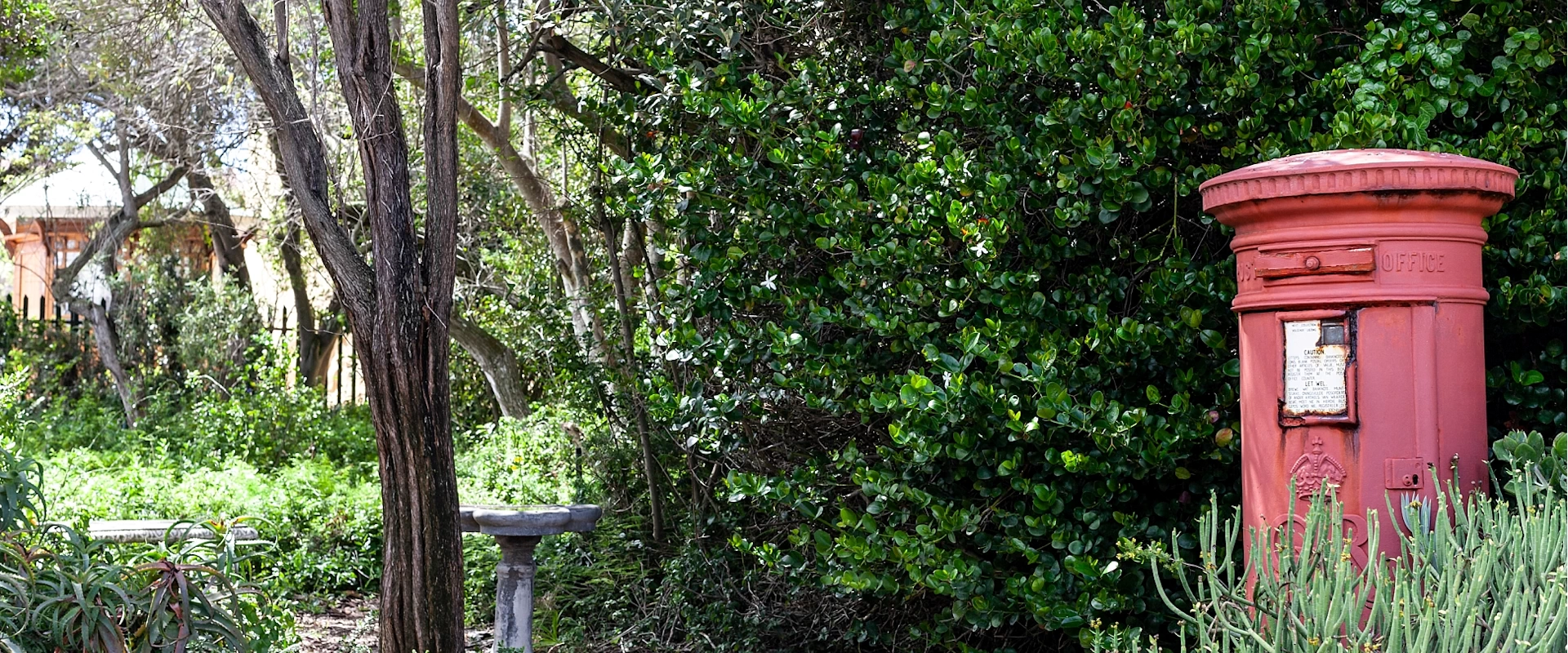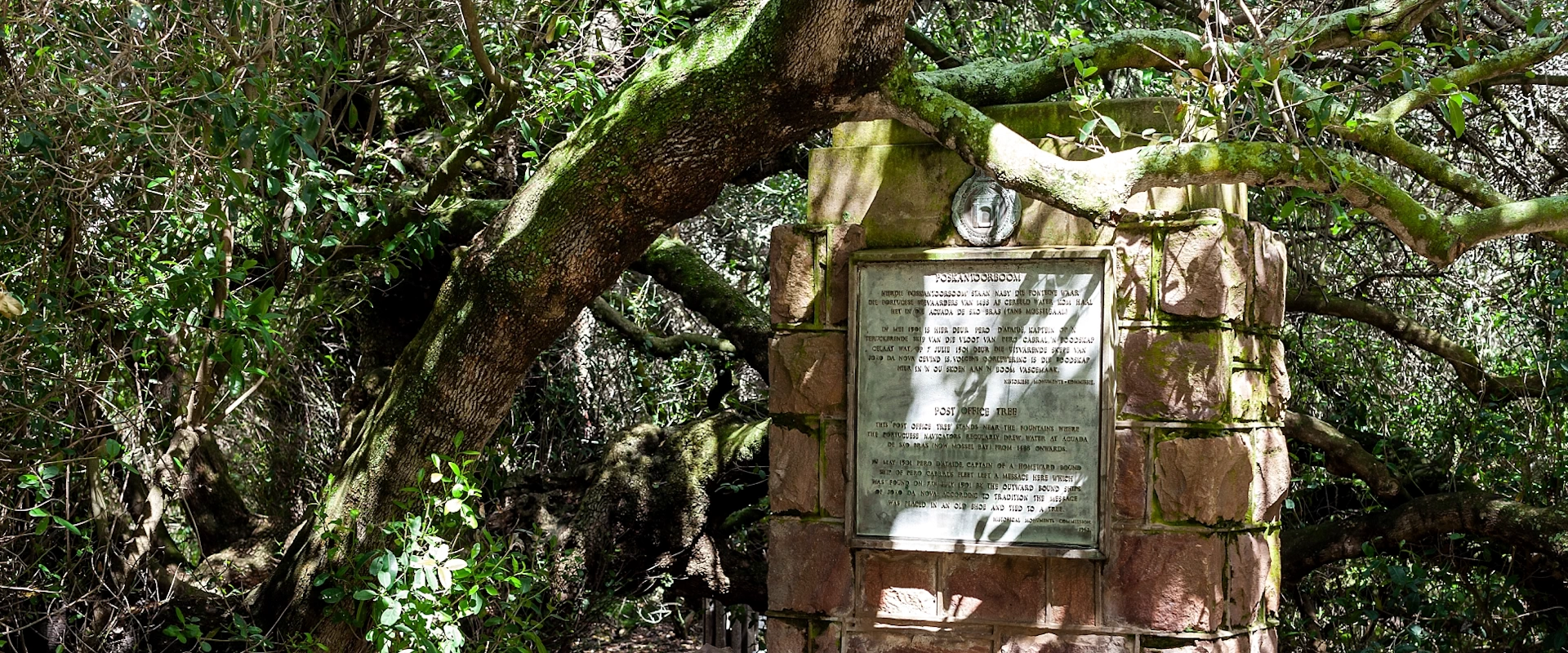The Post Office Tree
The Post Office Tree
The fourth Portuguese Fleet to India found D’Ataide’s letter in July 1501. It contained information that was useful to them about the hostility towards the Portuguese at Calicut, present-day known as Kozhikode and warned of rough waters “to the East”.
The captain of this fleet, in turn, left an inscription on stone which was found in 1850. A replica of this postal stone can be seen inside the Maritime Museum.

Leaving post ashore became a means of communication between ships that anchored in the bay for supplies.
It was declared a provincial heritage site. In 1963, the local tourism organisation placed a large post box, shaped like a sailor’s boot, next to the tree where visitors can post letters and postcards. A special frank is used on all outgoing mail to commemorate the fact that South Africa’s first post office was a tree.
Sources:
Barker, B.J. : Dias and Da Gama: the Portuguese discovery of the Cape Sea route, Struik, Cape Town. (Undated)
LANTERN, January (1988): Tydskrif vir Kennis en Kultuur. Jaargang, 37, nr.1 (Stigting vir Onderwys, Wetenskap en Tegnologie, Dept. van Nasionale Opvoeding, Pretoria)
Miller, R. (Ed) (1980): The Seafarers. The East Indiamen. Time-Life Books, Amsterdam.
Potgieter, D.J. et al. (eds) (1970): Standard Encyclopaedia of Southern Africa, Cape Town: NASOU, v.4, Human & Rousseau, Kaapstad (2000).
Schoonees, P. (1991): Inskripsies op padrãos, posklippe, grafstene en bakens. SA Kultuurhistoriese Museum, Human & Rousseau. Kaapstad

